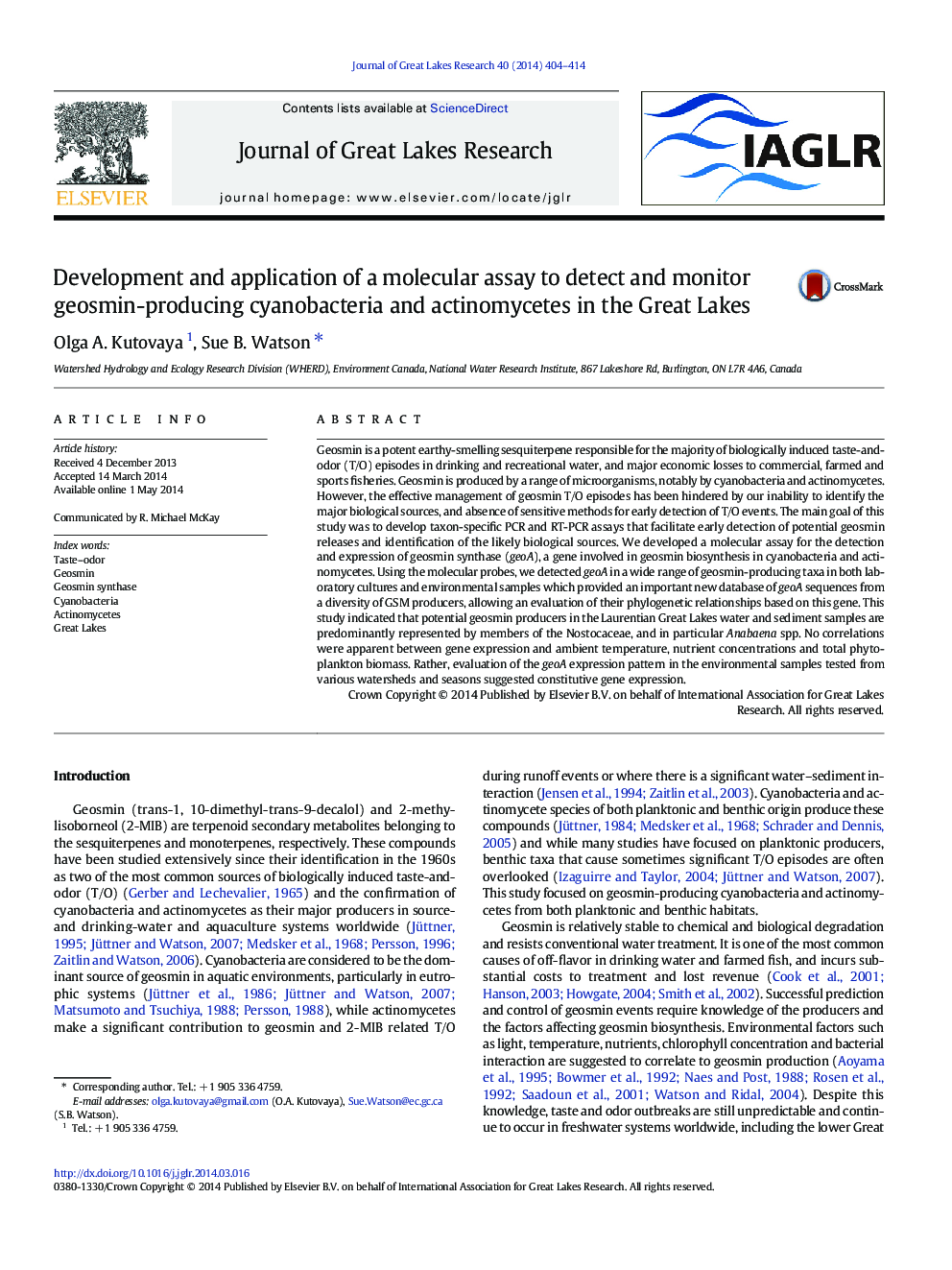| Article ID | Journal | Published Year | Pages | File Type |
|---|---|---|---|---|
| 6305234 | Journal of Great Lakes Research | 2014 | 11 Pages |
Abstract
Geosmin is a potent earthy-smelling sesquiterpene responsible for the majority of biologically induced taste-and-odor (T/O) episodes in drinking and recreational water, and major economic losses to commercial, farmed and sports fisheries. Geosmin is produced by a range of microorganisms, notably by cyanobacteria and actinomycetes. However, the effective management of geosmin T/O episodes has been hindered by our inability to identify the major biological sources, and absence of sensitive methods for early detection of T/O events. The main goal of this study was to develop taxon-specific PCR and RT-PCR assays that facilitate early detection of potential geosmin releases and identification of the likely biological sources. We developed a molecular assay for the detection and expression of geosmin synthase (geoA), a gene involved in geosmin biosynthesis in cyanobacteria and actinomycetes. Using the molecular probes, we detected geoA in a wide range of geosmin-producing taxa in both laboratory cultures and environmental samples which provided an important new database of geoA sequences from a diversity of GSM producers, allowing an evaluation of their phylogenetic relationships based on this gene. This study indicated that potential geosmin producers in the Laurentian Great Lakes water and sediment samples are predominantly represented by members of the Nostocaceae, and in particular Anabaena spp. No correlations were apparent between gene expression and ambient temperature, nutrient concentrations and total phytoplankton biomass. Rather, evaluation of the geoA expression pattern in the environmental samples tested from various watersheds and seasons suggested constitutive gene expression.
Related Topics
Physical Sciences and Engineering
Earth and Planetary Sciences
Earth and Planetary Sciences (General)
Authors
Olga A. Kutovaya, Sue B. Watson,
